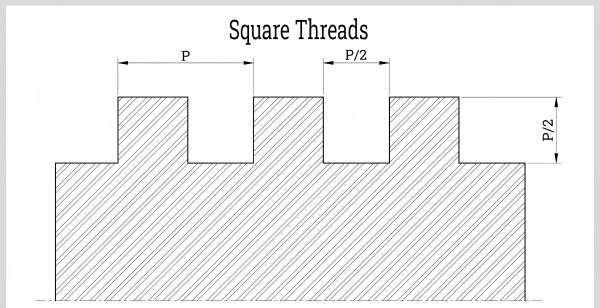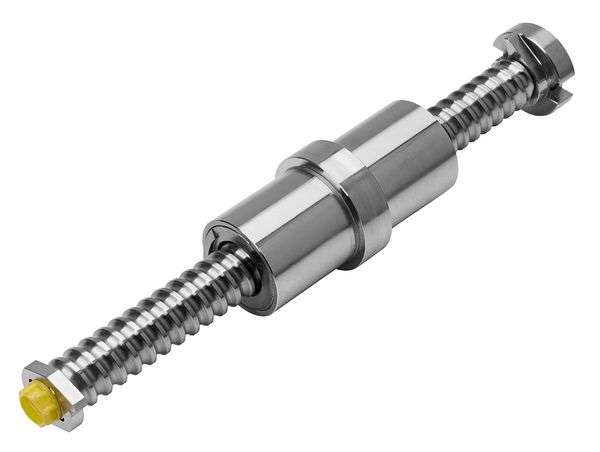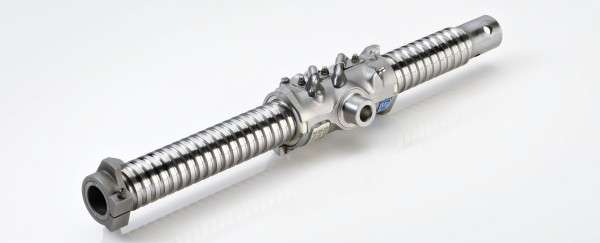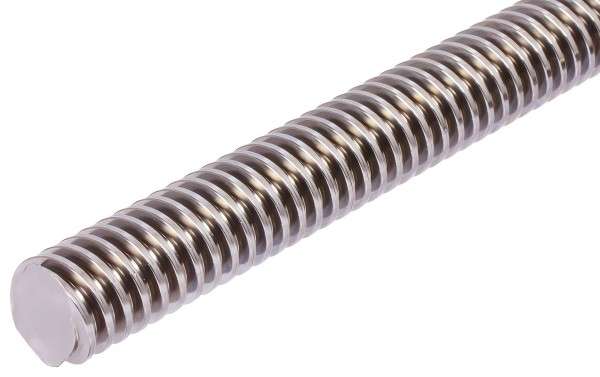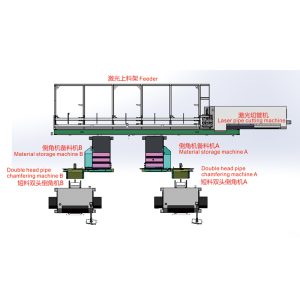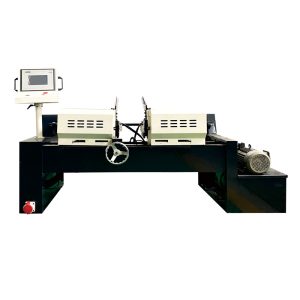Lead Screw vs Ball Screw
Introduction
Lead screws and ball screws are used in various machines and come with unique features for use in a given machine. Lead screws are stable, economical, and easy to produce and use, which is why they are usable for applications, which do not require exactness but cannot afford to be slippery either.
Ball screws on the other hand have higher efficiency and accuracy since the motion is in rolling. Your decision regarding the type depends on the balance you can achieve between performance, cost, and the needs of your particular project.
1. What is a Lead Screw?
A lead screw is a screw used in the mechanism which is required to transform rotary movement into straight-line movement. It includes a screw, and a corresponding nut, often used in the machines for location or linear-motion generation.
Lead screws are mostly used in applications not very sensitive with the degree of precision, low rotation speeds, and moderate loads like jacks, CNC machines, and 3D printers.
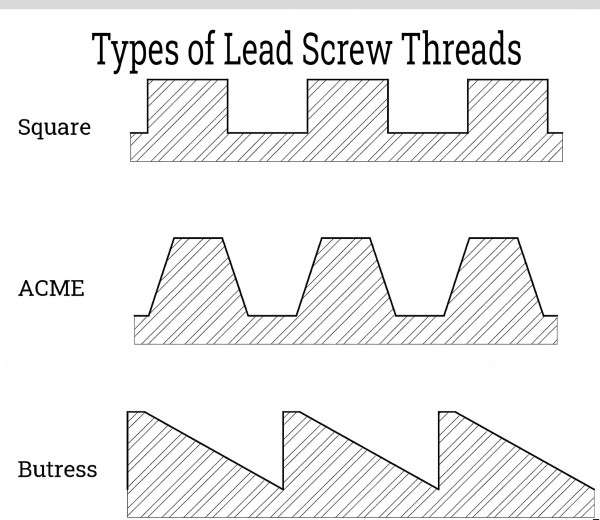
Types of Lead Screws
- V Thread
V threads are the most popular category of thread in fastening applications. Even if they have high friction they are used in light-duty lead screws and therefore they are not good for power transmission.
| Thread Size (Dia.-TPI) |
Number Thread Starts |
Major Diameter (in.) |
Lead (in./rev.) |
Product Line |
Static Load Rating Bronze Nut (Ibs.) |
Operating Load Rating (Ibs.) |
Minor Diameter (in.) |
Drive Torque Ratio (in.-Ibs./lbs.) |
Forward Drive Efficiency |
Screw Weight (Ibs./ft.) |
| 1/2-13 | 1 | 0.5 | 0.077 | V-Thread | 4,200 | 1,500 | 0.417 | 0.05 | 24% | 0.6 |
| 9/16-12 | 1 | 0.6 | 0.083 | V-Thread | 5,500 | 1,900 | 0.472 | 0.06 | 23% | 0.7 |
| 5/8-11 | 1 | 0.6 | 0.091 | V-Thread | 6,800 | 2,400 | 0.527 | 0.06 | 23% | 0.9 |
| 3/4-10 | 1 | 0.8 | 0.100 | V-Thread | 10,200 | 3,700 | 0.642 | 0.07 | 21% | 1.3 |
| 7/8-9 | 1 | 0.9 | 0.111 | V-Thread | 14,100 | 5,300 | 0.755 | 0.09 | 20% | 1.8 |
| 1-8 | 1 | 1.0 | 0.125 | V-Thread | 18,600 | 7,000 | 0.865 | 0.10 | 20% | 2.3 |
| 1-8 | 2 | 1.0 | 0.250 | V-Thread | 18,600 | 7,000 | 0.865 | 0.12 | 33% | 2.3 |
| 11/8-7 | 1 | 1.125 | 0.143 | V-Thread | 23,400 | 9,800 | 0.950 | 0.11 | 20% | 2.9 |
| 11/4-7 | 1 | 1.25 | 0.143 | V-Thread | 29,800 | 12,800 | 1.075 | 0.12 | 19% | 3.6 |
| 13/8-6 | 1 | 1.375 | 0.167 | V-Thread | 35,600 | 15,200 | 1.171 | 0.13 | 20% | 4.4 |
| 13/8-6 | 2 | 1.375 | 0.333 | V-Thread | 35,600 | 15,200 | 1.171 | 0.16 | 33% | 4.4 |
| 13/8-6 | 3 | 1.375 | 0.500 | V-Thread | 35,600 | 15,200 | 1.171 | 0.19 | 42% | 4.4 |
| 11/2-6 | 1 | 1.5 | 0.167 | V-Thread | 43,400 | 18,800 | 1.296 | 0.14 | 18% | 5.2 |
| 11/2-6 | 2 | 1.5 | 0.333 | V-Thread | 43,400 | 18,800 | 1.296 | 0.17 | 31% | 5.2 |
| 11/2-6 | 3 | 1.5 | 0.50 | V-Thread | 43,400 | 18,800 | 1.296 | 0.20 | 40% | 5.2 |
| 13/4-5 | 1 | 1.75 | 0.20 | V-Thread | 58,500 | 25,700 | 1.505 | 0.17 | 19% | 7.1 |
| 2-4.5 | 1 | 2.0 | 0.22 | V-Thread | 77,100 | 34,300 | 1.727 | 0.19 | 18% | 9.3 |
| 21/4-4.5 | 1 | 2.25 | 0.22 | V-Thread | 100,000 | 46,000 | 1.977 | 0.21 | 17% | 12.0 |
| 21/2-4 | 1 | 2.50 | 0.25 | V-Thread | 123,000 | 56,900 | 2.193 | 0.24 | 17% | 14.8 |
| 21/2-4 | 2 | 2.50 | 0.50 | V-Thread | 123,000 | 56,900 | 2.193 | 0.28 | 29% | 14.8 |
| 23/4-4 | 1 | 2.75 | 0.25 | V-Thread | 153,000 | 72,300 | 2.443 | 0.26 | 16% | 18.1 |
| 23/4-4 | 2 | 2.75 | 0.50 | V-Thread | 153,000 | 72,300 | 2.443 | 0.30 | 27% | 18.1 |
| 3-4 | 1 | 3.0 | 0.25 | V-Thread | 185,000 | 90,100 | 2.693 | 0.27 | 14% | 21.7 |
| 3-4 | 2 | 3.0 | 0.50 | V-Thread | 185,000 | 90,100 | 2.693 | 0.32 | 25% | 21.7 |
| 31/4-4 | 1 | 3.25 | 0.25 | V-Thread | 220,000 | 110,000 | 2.943 | 0.29 | 14% | 25.7 |
| 31/4-4 | 2 | 3.25 | 0.50 | V-Thread | 220,000 | 110,000 | 2.943 | 0.34 | 24% | 25.7 |
| 31/4-4 | 4 | 3.25 | 1.00 | V-Thread | 220,000 | 110,000 | 2.943 | 0.42 | 38% | 25.7 |
| 31/2-2 | 1 | 3.5 | 0.25 | V-Thread | 259,000 | 133,000 | 3.193 | 0.31 | 13% | 30.0 |
| 31/2-2 | 2 | 3.5 | 0.50 | V-Thread | 259,000 | 133,000 | 3.193 | 0.35 | 22% | 30.0 |
| 31/2-2 | 4 | 3.5 | 1.00 | V-Thread | 259,000 | 133,000 | 3.193 | 0.44 | 36% | 30.0 |
| 33/4-4 | 1 | 3.75 | 0.25 | V-Thread | 300,000 | 159,000 | 3.443 | 0.33 | 12% | 34.6 |
| 33/4-4 | 2 | 3.75 | 0.50 | V-Thread | 300,000 | 159,000 | 3.443 | 0.37 | 21% | 34.6 |
| 33/4-4 | 4 | 3.75 | 1.00 | V-Thread | 300,000 | 159,000 | 3.443 | 0.46 | 35% | 34.6 |
| 4-4 | 1 | 4.0 | 0.25 | V-Thread | 345,000 | 188,000 | 3.693 | 0.35 | 11% | 39.6 |
| 4-4 | 2 | 4.0 | 0.50 | V-Thread | 345,000 | 188,000 | 3.693 | 0.39 | 20% | 39.6 |
| 4-4 | 4 | 4.0 | 1.00 | V-Thread | 345,000 | 188,000 | 3.693 | 0.48 | 33% | 39.6 |

- Square Thread
Square threads have high load-carrying capacity, high efficiency, and low friction, perfect for heavy loads and precise applications. While their cross-sectional geometry ensures uniform power distribution, it might be more difficult to machine them.
- Acme Thread
Acme threads are applied to lead screws due to their high load-carrying capacity and relatively simple to produce. Non-sphinx screws are versatile as they provide a midpoint between time efficiency and usage efficiency for a range of applications.

- Trapezoidal Thread
Trapezoidal threads are similar to the Acme type but conform to metric screw thread dimensions. These threads are typical for European designs and provide quite good load-carrying abilities.
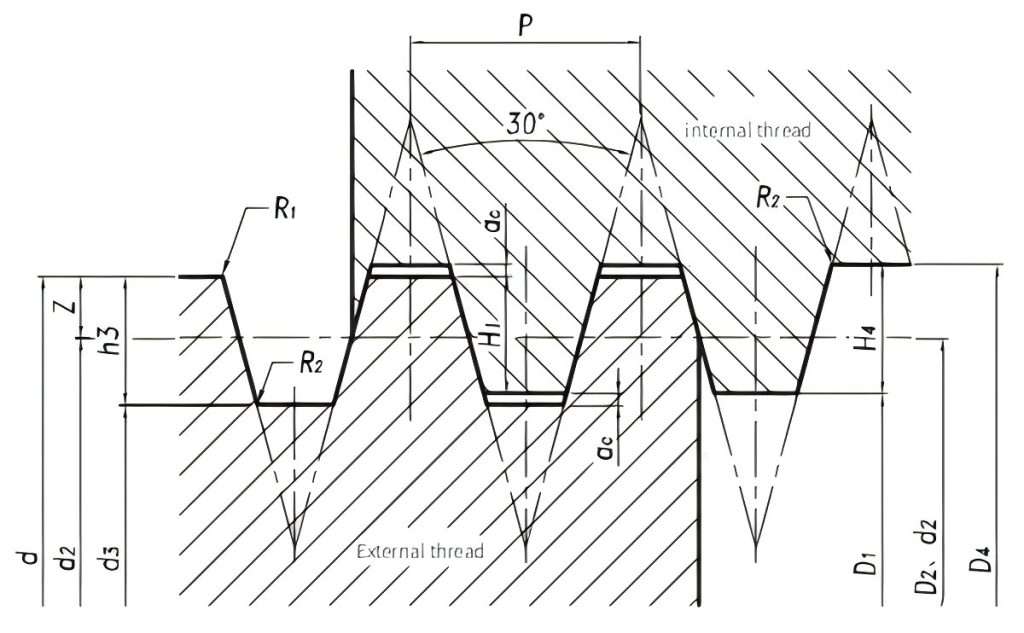
- Buttress Thread
Buttress threads are those SCRs that are intended to carry high axial loads along a single direction. You will then come across them in areas such as presses and lifting equipment where strength is of paramount importance.
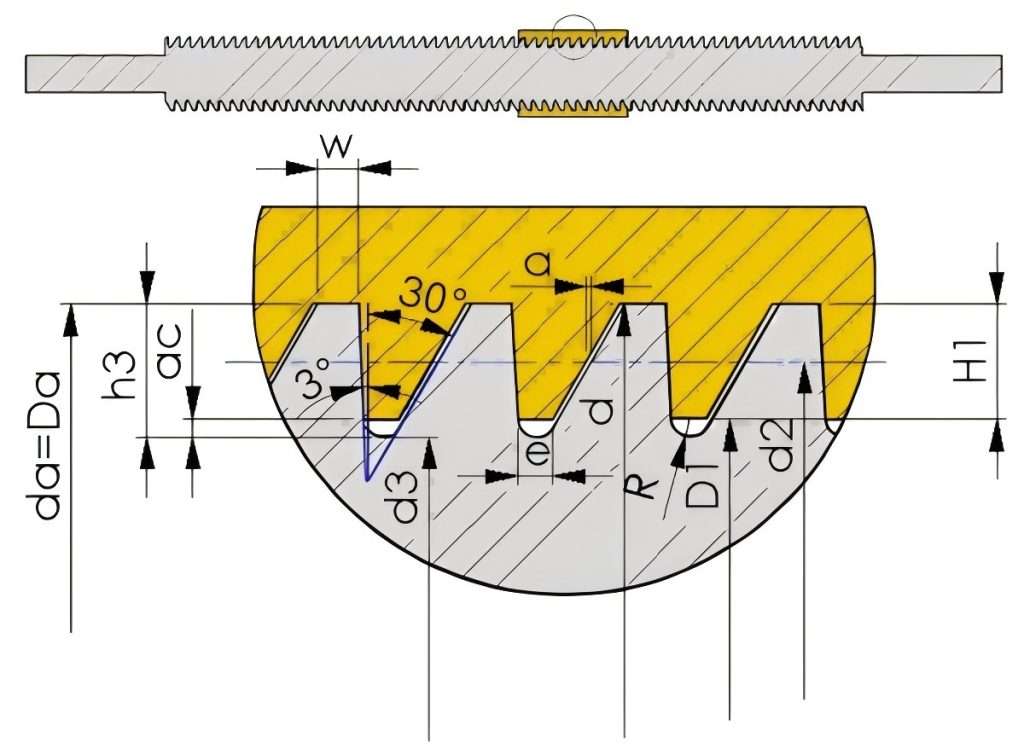
2. How Does a Lead Screw Work?
A lead screw operates through the application of rotary to linear movement due to the screw thread and the corresponding nut. While the Helical screw rotates then the direction of threads that are in contact with the helical nut advance or retract with a great linear precision parallel to the central axis of the helix.
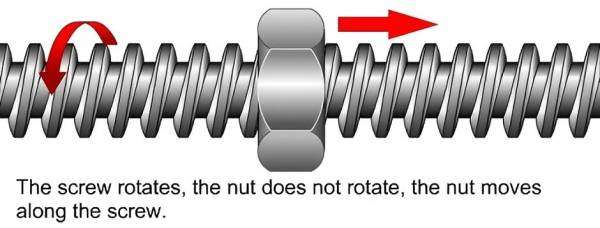
The efficacy and effectiveness of the screw depend on the type of thread it has, the size of the thread pitch, and the friction.
By varying the rotational input, lead screws can be used to control the rate of movement of a load, as well as the direction of movement, making lead screws useful for applications that require steady and controlled load movement.
Lead Screw Applications
- Linear Actuators
Lead screws are frequently used in all types of linear movements in many areas such as say robotics systems, medical sectors, and also in precision instruments.
- CNC Machines
Lead screws in CNC machines are used for accurate leads and motion control in applications involving the milling, cutting, and engraving procedures.
- 3D Printers
Lead screws are particularly useful in 3D printers since they guarantee precise placement of arguments from one layer to another invaluable in creating complex designs.
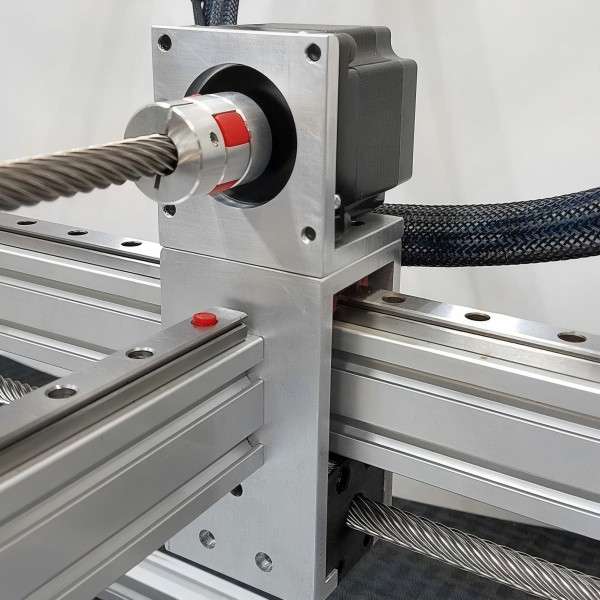
- Lifting Mechanisms
Jacks and lifts use lead screws to transform rotary input to linear force which also leads to safe lifting of large loads.
- Optical and Measuring Equipment
Microscopes and measuring instruments such as laser systems, optical tables, and positioning tables use lead screws for fine movements or positioning.

3. What is a Ball Screw?
A ball screw is a screw-type linear motion element that translates rotary motion into linear motion with minimal efficiency and high accuracy. This includes a threaded shaft, a matched nut, and anti-frictional elements in the form of balls that circulate to give minimum friction than sliding.
Ball screws are applied when smooth motion, high accuracy, and minimal backlash are needed in an application They are applied in CNC machines, Robotics, and Aerospace applications.
- Rolled Ball Screw
The thread on the shaft of a rolled ball screw is created by rolling the balls. In addition to being cheap and adaptable, they also provide rapid and reasonably precise operation.
- Precision Ball Screw
Precision ball screws are used in applications that require very fine mechanical motion control and low backlash. They are subjected to very delicate manufacturing processes to ensure that have small tolerances to suit the challenging industrial uses.
- High Load Ball Screw
High load ball screws are designed to support a large axial load. They have strong constructional characteristics and are widely applied in equipment, presses, and large-scale automation equipment.
- Precision Ground Ball Screw
High-precision ground ball screws are made by carrying the category of grinding processes to provide the highest level of accuracy and surface finish.
They are applied to high-tech areas such as aerospace technology, medical instruments, and instruments that need fine precision.
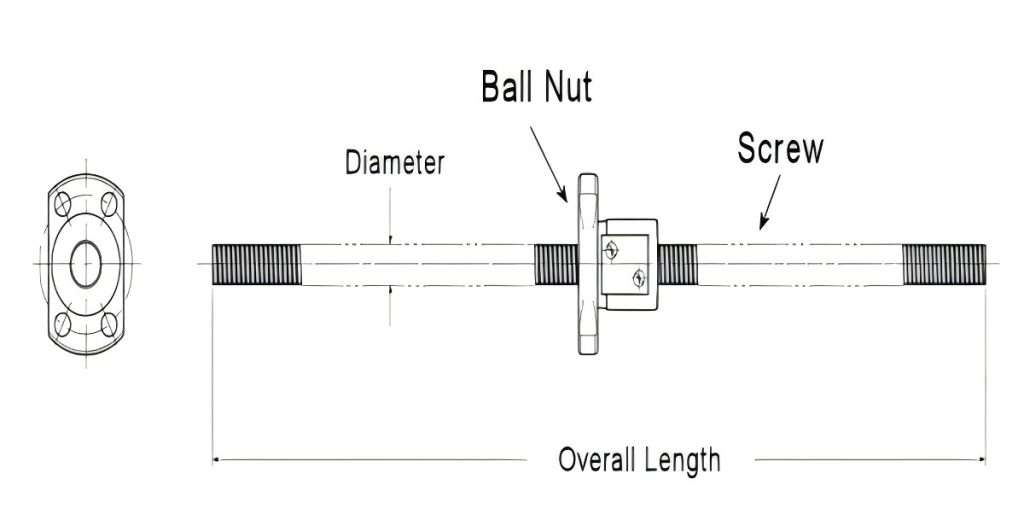
4. How Does a Ball Screw Work?
The ball screw is a device that acts as a way to transfer rotary to a linear movement, and it does this with the aid of recirculating ball bearings between the screw and nut. The balls move in the grooves of the shaft and nut whenever the screw rotates, thus minimizing the friction, and allowing effortless linear motion.
Due to the rolling motion, it performs less wear, is more precise in operation, and controls heat generation thus suitable for high accuracy and long operation.
Types of Ball Screws
Ball Screw Applications
- CNC Machines
The ball screws are widely employed in CNC machines in applying accurate positioning of the tools, high rates of feed, and the least backlash during the operation.
- Robotics
In robotics, ball screws are used to offer a linear motion that is accurate to the required level for picking, placing, or assembling components with high dependability.
- Aerospace Systems
High-load bearings make ball screws suitable for the aerospace industry where they may be used in operations like control surfaces or even landing gear.
- Medical Equipment
Medical devices such as MRI and surgical robots utilize ball screws in different parts of the equipment due to their accuracy in positioning and fluidity of motion.
- Industrial Automation
Industrial automation systems such as material handling, assembly lines, and inspection use ball screws to complete high-speed and high-precision applications.
5. Advantages of Lead Screws
· Cost-Effective
Lead screws are preferred for use in application because they are cheaper in both the cost of acquisition and servicing compared to ball screws.
· Simple Design
A ball-bearing system of operation is necessary for their design to be simple, reducing the likelihood of introducing other parts during construction or for repairs.
· Self-Locking Ability
Lead screws have a built-in locking mechanism that prevents the lead screw from being back-driven, which is well suited to vertical applications such as jacks and lifts.
· Quiet Operation
Lead screws do not have rolling elements hence they are very quiet, an advantage in quiet applications.
· Customizable Threads
Different thread types can be categorized as geometric such as square, trapezoidal, and Acme where this increases customizability to fit certain needs and expectations.
Disadvantages of Lead Screws
· Lower Efficiency
Lead screws are relative to ball screws in that the linear movement is derived through the lead of the screw threads which slide past each other and experienced higher friction thus means lower mechanical efficiency compared to ball screws.
· Higher Wear
These are both reduced by friction because such unwanted contact between surfaces causes them to wear faster, at high speed or usage, and carry heavy loads.
· Limited Speed
Lead screws cannot be used in high-speed applications due to the amount of heat that is produced by friction constrains the allowable speed of lead screw operation.
· Less Precision
Lead screws may also have an issue with backlash and therefore lower accuracy as compared to other lead screws, especially for sensitive uses.
· Frequent Maintenance
Lead screws generally suffer from high friction and wear so they usually have to be lubricated and maintained often.
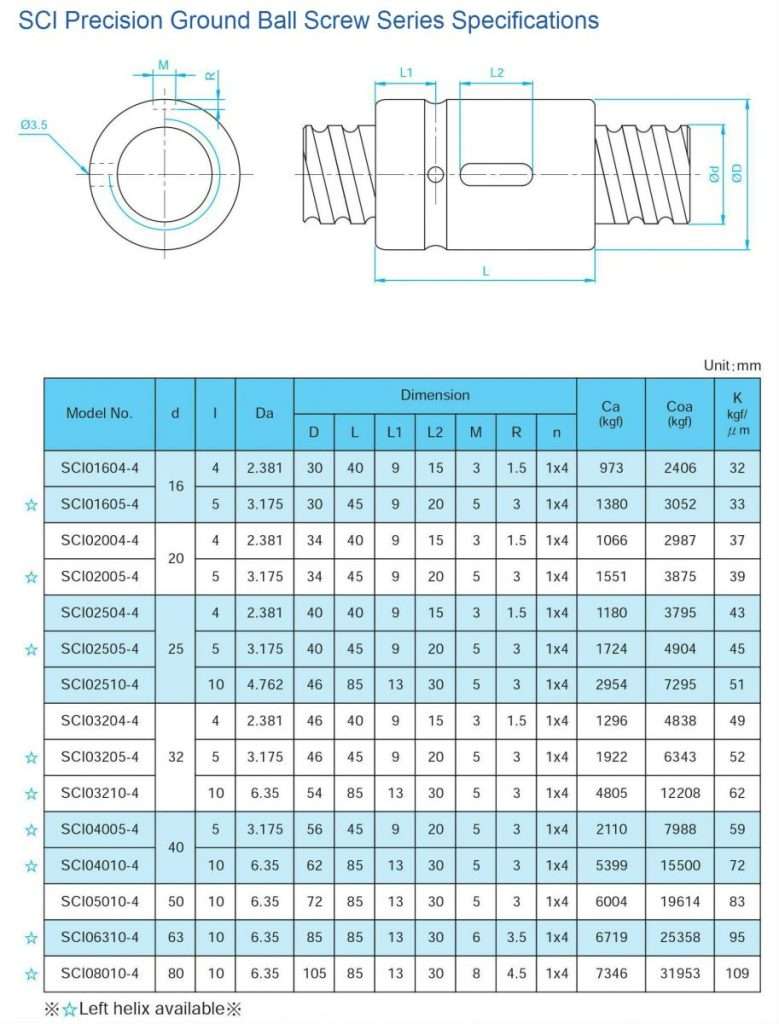
6. Advantages of Ball Screws
· High Efficiency
Ball screws decrease friction through rolling motion, they are often greater than 90 percent efficient, which saves power and reduces losses.
· Exceptional Precision
Due to their design, it is possible to obtain near-perfect linear motion with very low backlash a distinctive that makes them suitable for precise operations.
· Durability and Long Lifespan
Rolling elements minimize wear and increase the usage-life of ball screws even under conditions of high load and even usage.
· High-Speed Capability
Ball screws are capable to run high-speed operations with smooth motion and the least noise.
· High Load-Bearing Capacity
It is capable of handling large axial loads, it regularly features in many industrial and Aerospace industries.
· Reduced Maintenance
Less wear rates and concentration on constant performance reduce general servicing compared to other screw varieties.
· Minimal Heat Generation
Reduced friction also means that heat generated when components are in use is not likely to cause thermal distortions when using high-load machinery.

Disadvantages of Ball Screws
· Higher Cost
Ball screws have a higher initial cost and the recurring maintenance cost is also high over lead screws due to their geometrical structure.
· Vulnerability to Back-Driving
While lead screws can provide their locking, a ball screw will not have this feature meaning additional systems must be provided to avoid back drive in a vertical motion.
· Complex Design
They bring about some extra work in that ball bearings and recirculation systems are part of the design increasing the level of difficulty of installation and repair them.
· Noise Generation
The disadvantage of ball screws at high speed is it tends to create more noise from the movement of ball bearings which may be intolerable under light vibration conditions.
· Sensitive to Contamination
Ball screws are less robust than belt screws and the dirt and debris affect its performance and this becomes a problem if it has to be sealed or cleaned regularly.
· Higher Maintenance Costs
Nonetheless, the frequency of maintenance is lower, replacement or repair of degraded parts such as ball bearings may be expensive and time-consuming.
· Limited Applications for Low Loads
In low-load applications, the use of ball screws may not be ideal due to the expensive precision that it has to offer to the application it is used in.

7. How to Select the Right Screw for Your Application?
As for selecting between a lead screw and a ball screw, different factors play a role in making the right decision. Evaluating the following criteria ensures optimal performance and efficiency in your application:
· Load Capacity
Factors that should be taken into consideration include the expected axial load capacity in the application the link will be used.
Lead screws are constituted to be appropriate for moderate load while ball screws are superior for high load application because of their load-carrying capability.
· Speed
Identify the desired speed of business operation. While ball screws generate low friction, and low wear at high speeds, lead screws are ideal for lower-velocity precision movements.
· Materials
In the screw and nut, geometrical features affect friction, restriction of movement, and hysteresis while material characteristics influence endurance, weight, and corrosion.
Both contain stainless steel that provides strength and also can withstand harsh environmental conditions.
· Lubrication
Lubrication minimizes wear and tear and helps to decrease friction. The ball screw needs periodic lubrication for it to work efficiently and to avoid the problem of foreign material in it. Lead screws require it less often, but a good lubricant should be used at some time.
· Precision
They use ball screws for high-accuracy applications like CNC Machining, Medical equipment, & Numerically Controlled Machinery, etc. because of their precision & less Backlash. Lead screws are adequate for many low-load accuracy applications.
· Travel Distance
Evaluate the amount of linear travel distance needed. This shows that ball screws provide longer and more efficient travel, however, lead screws can be better where the application is short and less complex.
· Application Environment
Think about the working environment. Lead screws are ideal in such applications as they are less complex as compared to ball screws which are very sensitive to contaminants and thus must be protected in rough conditions.
Through assessment of these factors, one can choose the appropriate screw type that will meet your operations and environmental condition to deliver the intended performance.
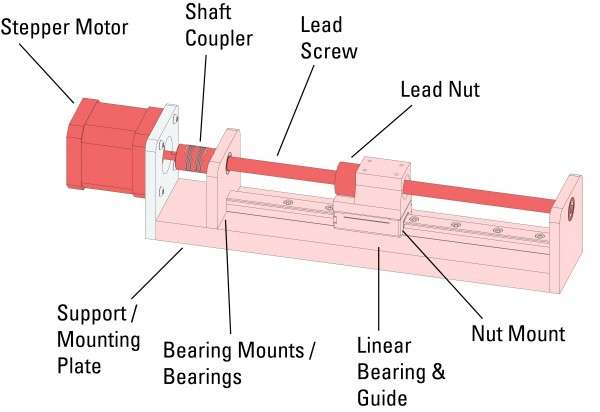
Conclusion
Ball screw is generally preferred over lead screws, but the latter also can be used based on the requirement of the application.
Lead screws can operate with conventional nuts for lesser prices; they are uncomplicated; and they don’t require additional force to maintain their locked position, so they are ideal for low sped moderate force applications.
Ball screws boast higher efficiency, accuracy, and high-speed performance, and are perfect for demanding and high-load applications. Your specific needs in terms of load, speed, accuracy, and maintenance should be known to ensure that you get the right screw for the right job.
Don't forget to share this post!
Related Products
CONTACT US
Tell us your raw material and working details to get quotations within 24 hours.
WhatsApp Us: +86 159 27 555863

Want the best price & newest metal working machinery buying guide,tips and trends sent straightly to your box?Sign up for Armpro's monthly newsletter,we're free for your consultation and Offer you the most suitable working solutions!
The Buyer's Guide
- Tapping Machine: The Ultimate Buying Guide in 2024
- Electric Tapping Machines:the Ultimate Buying Guide in 2024
- Drilling Machine: The Ultimate Buying Guide in 2024
- Drilling milling Machine:The Ultimate Buying Guide in 2024
- CNC Tapping Machine :The Complete Buying Guide in 2024
- Pipe chafering Machine:The Complete Importing Guide in 2024
- Radial drilling Machine:The Complete Buying Guide in 2024
- Thread rolling Machine:The Complete Buying Guide In 2024
- Pillar Drilling Machine:The Ultimate Buying Guide in 2024

